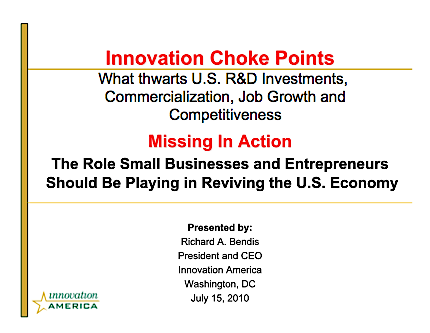 Did you know that there are over 1.5 million non-profits in operation
in the U.S. which accounts for a staggering 8.11% of all wages paid in
the U.S. (Source: National
Center for Charitable Statistics).
Did you know that there are over 1.5 million non-profits in operation
in the U.S. which accounts for a staggering 8.11% of all wages paid in
the U.S. (Source: National
Center for Charitable Statistics).
If you are passionate
about a cause and can find a like-minded group of people to help you
share the significant responsibilities of operating a non-profit, then
the philanthropic and entrepreneurial rewards can be significant – if
you know what you are doing.
Starting a non-profit is very similar
to starting a for-profit business – and requires a solid understanding
of business planning, tax law, marketing, financing options and
leadership.
Here is a basic checklist for how to start
a non-profit organization (NPO), while ensuring you pay attention to
important legal and regulatory processes:
1. Define
Your Mission
To ensure that everyone is singing off the
same hymn sheet, it’s critical that you define your mission statement,
(i.e. the purpose of your non-profit and the need it addresses) early on
in the start-up phase. At the same time, realize that it will evolve
over time as other stakeholders take shape and provide input – so keep
your mission statement reasonably high level for now.
 There have been quite a few posts written about this meme in the past
few weeks.
There have been quite a few posts written about this meme in the past
few weeks.

 Did you know that there are over 1.5 million non-profits in operation
in the U.S. which accounts for a staggering 8.11% of all wages paid in
the U.S. (Source:
Did you know that there are over 1.5 million non-profits in operation
in the U.S. which accounts for a staggering 8.11% of all wages paid in
the U.S. (Source:  What ails Europe’s innovation machine? Bureaucratic procedures are high on the list, as is the EU’s intellectual property framework, according to a new survey of European Union and Brussels opinion leaders commissioned by GE.
What ails Europe’s innovation machine? Bureaucratic procedures are high on the list, as is the EU’s intellectual property framework, according to a new survey of European Union and Brussels opinion leaders commissioned by GE. If the EU is to meet its targets for cutting greenhouse gas emissions, integrating renewable energy sources, and being more energy efficient - while at the same time guaranteeing energy security - its electricity transmission system needs a fundamental and far-reaching modernisation.
If the EU is to meet its targets for cutting greenhouse gas emissions, integrating renewable energy sources, and being more energy efficient - while at the same time guaranteeing energy security - its electricity transmission system needs a fundamental and far-reaching modernisation. There has been a huge drop in venture capital activity in the UK over the past two years, with the number of exits falling by 40 per cent and the total amount of VC raised falling by 50 per cent, according to new research by the National Endowment for Science, Technology and the Arts (NESTA).
There has been a huge drop in venture capital activity in the UK over the past two years, with the number of exits falling by 40 per cent and the total amount of VC raised falling by 50 per cent, according to new research by the National Endowment for Science, Technology and the Arts (NESTA).
 Dear SBIR Gateway Insider,
Dear SBIR Gateway Insider, Venture capitalists are typically some of the most optimistic people on the planet, touting how new technologies will change the world. But ask American VCs about their own industry and that optimism just flies out the door. A new survey finds that more than 90 percent of U.S. venture capitalists expect the number of venture firms to decline in the next five years. That's hardly a vote of confidence, but it speaks to the big challenges facing an industry suffering from weak returns and lackluster exits.
Venture capitalists are typically some of the most optimistic people on the planet, touting how new technologies will change the world. But ask American VCs about their own industry and that optimism just flies out the door. A new survey finds that more than 90 percent of U.S. venture capitalists expect the number of venture firms to decline in the next five years. That's hardly a vote of confidence, but it speaks to the big challenges facing an industry suffering from weak returns and lackluster exits.
 Austin holds a handful of top rankings in innovation, intelligence, friendliness, fitness and environmentalism, but what about in terms of business, real estate, and the economy?
Austin holds a handful of top rankings in innovation, intelligence, friendliness, fitness and environmentalism, but what about in terms of business, real estate, and the economy?
 One prefers the unknown, the other can’t stand it. Now more than ever, we have to find a way to get along.
One prefers the unknown, the other can’t stand it. Now more than ever, we have to find a way to get along.
 Trilliant
Trilliant
 If you're like many of today's angel and venture funded companies, you are doing more with less and your team is distributed hither and yon. Your programmers are in India, your test team in Guatemala, and your sales force in 5 cities across the U.S. Even your management team is spread between Portland, San Francisco and Seattle.
If you're like many of today's angel and venture funded companies, you are doing more with less and your team is distributed hither and yon. Your programmers are in India, your test team in Guatemala, and your sales force in 5 cities across the U.S. Even your management team is spread between Portland, San Francisco and Seattle. If the electric car is to succeed, it needs charging stations that
are both easy-to-use and well designed--a clunky infrastructure will
quickly turn off potential drivers. That's why GE brought in
If the electric car is to succeed, it needs charging stations that
are both easy-to-use and well designed--a clunky infrastructure will
quickly turn off potential drivers. That's why GE brought in  The 22 statistics that you are about to read prove beyond a shadow of
a doubt that the middle class is being systematically wiped out of
existence in America.
The 22 statistics that you are about to read prove beyond a shadow of
a doubt that the middle class is being systematically wiped out of
existence in America.


